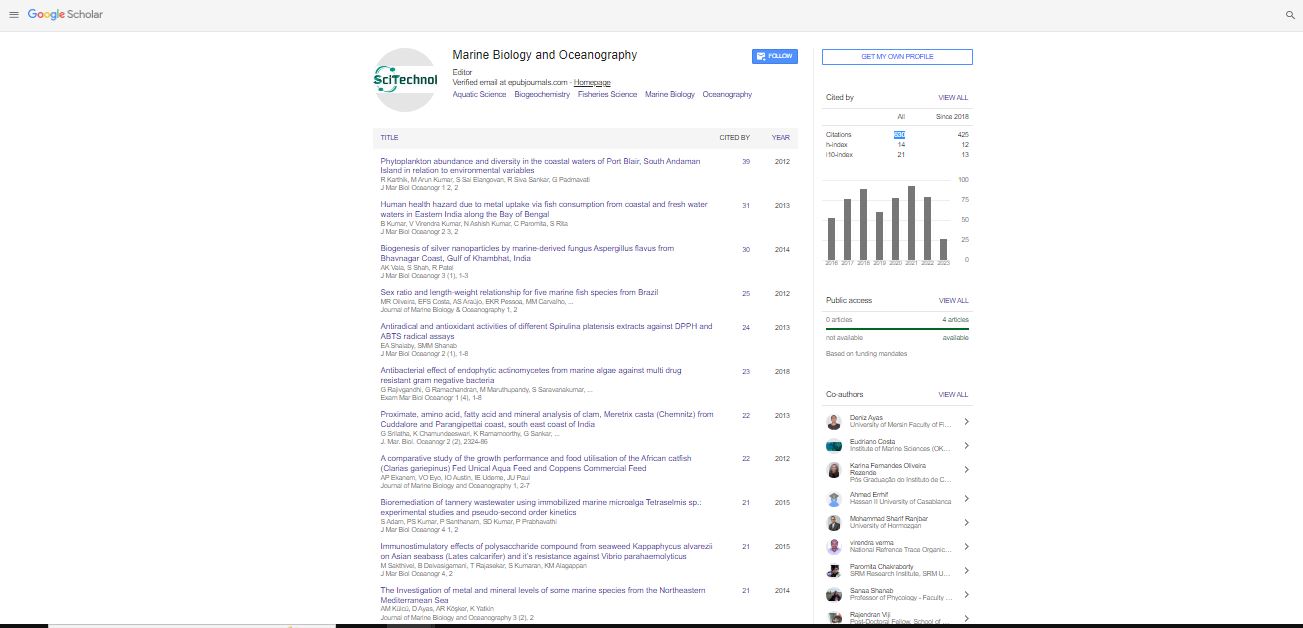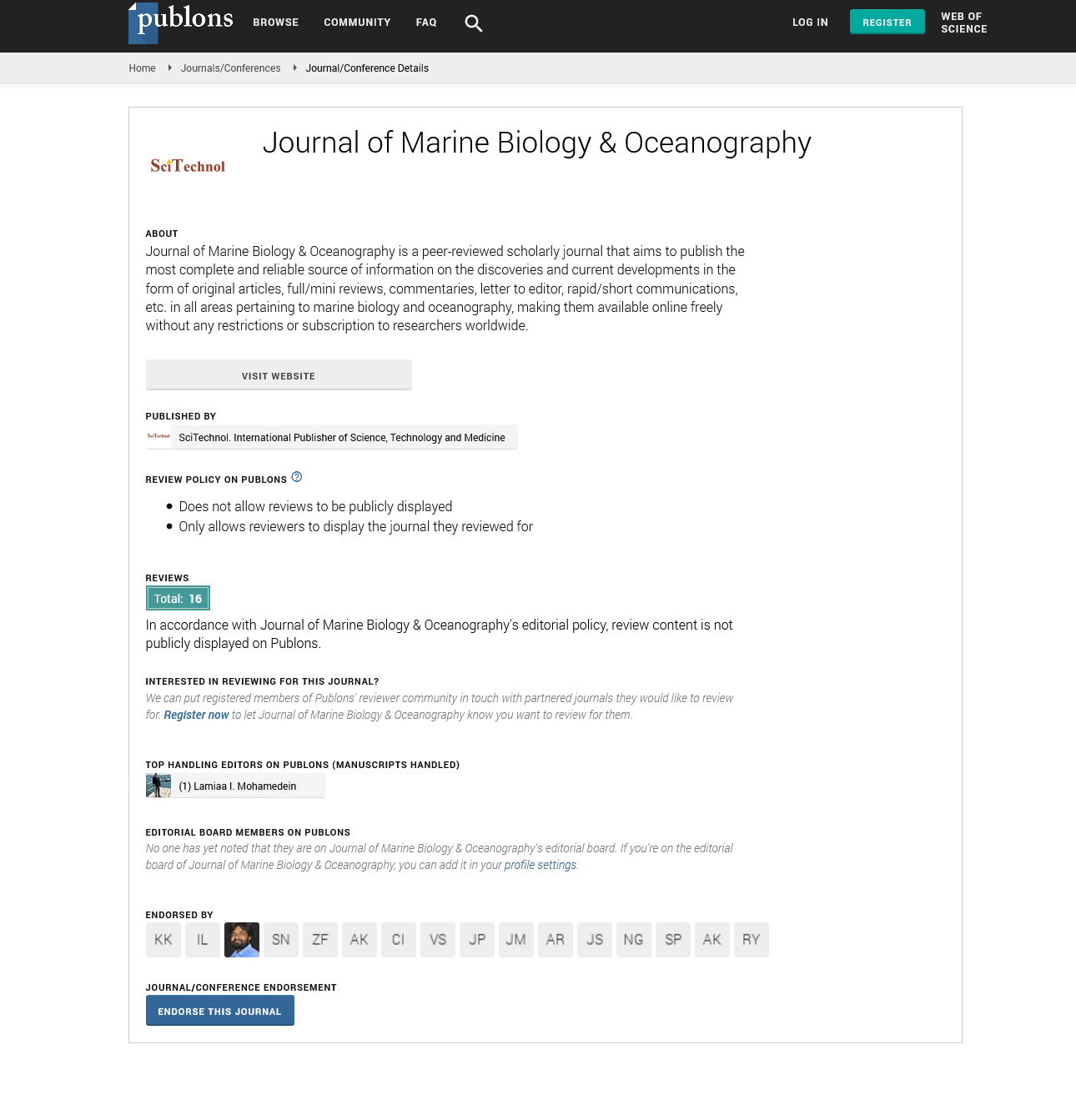Research Article, J Mar Biol Oceanogr Vol: 7 Issue: 1
Preliminary Study of Fish Assemblage Structure of the Marine Protected Area of Cayar in Senegal
Ousmane Diankha1,2*, Fatima BA2, Alassane Sarr3, Hameth Diaw Diadhiou4, Mamadou Diop2, Saliou Ndiaye5 and Patrice Brehmer6
1Université Cheikh Anta Diop (UCAD), Ecole supérieure polytechnique, Laboratoire de Physique de l’Atmosphère et de l’Océan Siméon Fongang (LPAO-SF), BP 5085 Fann, Dakar, Senegal
2Directorate of Marine Protected Areas, Ministry of Environment and Sustainable Development, Dakar, Senegal
3Institut Universitaire de Pêche et d’Aquaculture (IUPA), Université Cheikh Anta Diop UCAD II bâtiment pédagogique/Rez-de-chaussée, BP: 5005 DAKAR
4Institut Sénégalais de Recherches agricoles (ISRA), Centre de Recherches Océanographiques de Dakar-Thiaroye, PRH, BP 2241 Dakar, Senegal
5Ecole Nationale des Sciences Agronomes, Thiès, Senegal
6Institut de Recherche pour le Développement (IRD), UMR 195 Lemar (Laboratory of Marine Environment), BP 1386 Hann, Dakar, Senegal
*Corresponding Author : Ousmane Diankha
Directorate of Marine Protected Areas, Ministry of Environment and Sustainable Developpement, Dakar, Senegal
Tel: (+221) 774475751
E-mail: ousmane.diankha@ucad.edu.sn
Received: October 16, 2017 Accepted: January 11, 2018 Published: January 18, 2018
Citation: Diankha O, Fatima BA, Sarr A, Diadhiou HD, Diop M, et al. (2018) Preliminary Study of Fish Assemblage Structure of the Marine Protected Area of Cayar in Senegal J Mar Biol Oceanogr 7:1. doi: 10.4172/2324-8661.1000184
Abstract
Preliminary Study of Fish Assemblage Structure of the Marine Protected Area of Cayar in Senegal
Since its establishment in 2004, Cayar Marine Protected area (North of Senegal) is characterized by a lack of information on its fish fauna. Therefore, it becomes necessary to characterize the fish fauna of this MPA and its dynamics in time and space for a sustainable management of this conservation area. This present study investigated seasonal and spatial structure of the fish assemblage of Cayar MPA. This study consisted of collaborative seasonal sampling with local communities from six stations within the four main fishing areas with two types of fishing gears, purse seine and long line between 2015 and 2016. Ecological and trophic classification was performed in order to determine the fish fauna nature of this MPA. Multivariate analysis like factorial correspondence analysis and hierarchical classification analysis were carried out to study spatial and seasonal structure of fish assemblage of Cayar MPA. A total of 103 fish species from 45 families were reported. The most abundant species and the richest family were Pagellus bellottii and Carangidae, respectively. The fish assemblage was dominated by species of marine affinity and predators. Spatial and seasonal fish assemblages differed both in terms species richness and fish abundance. The highest and lowest species richness and abundance were recorded during the cold season and cold to warm transition period, respectively. A clear separation was found between stations where purse seine and long line were applied, in species composition and abundance. Results from this study might serve as the reference point of the fish assemblage in Cayar MPA. However, further investigation on the environmental variability is needed for a better understanding of the observed fish assemblage organization in time and space.
 Spanish
Spanish  Chinese
Chinese  Russian
Russian  German
German  French
French  Japanese
Japanese  Portuguese
Portuguese  Hindi
Hindi 
